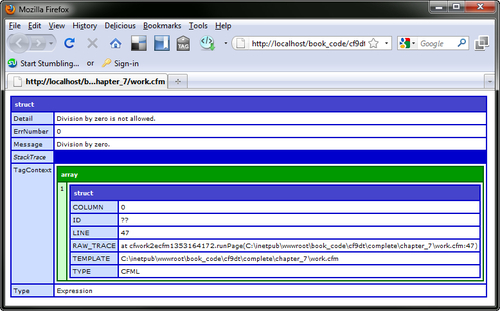I wish I could say that either my book or some other book could help anyone write perfect code that never fails. Until you find the magic mix, you will have to live in the imperfect world with the rest of us. This means that we need to have a way to deal with issues. Exception handling is about both exceptions and errors. Sometimes there is also a gap between our understanding of what the code does and what it actually does. In either case, adding exception handling will help make our code more stable:

Here is the data dump from a browser. We will always get an error while trying to divide a number by zero, so it is obvious that this failure was intentional. In other cases, we find sections of our code that may be harder to predict what these issues might be. We may want to take an issue like this and ask the user to correct the form data. There are many ways to deal with exceptions, but if...



